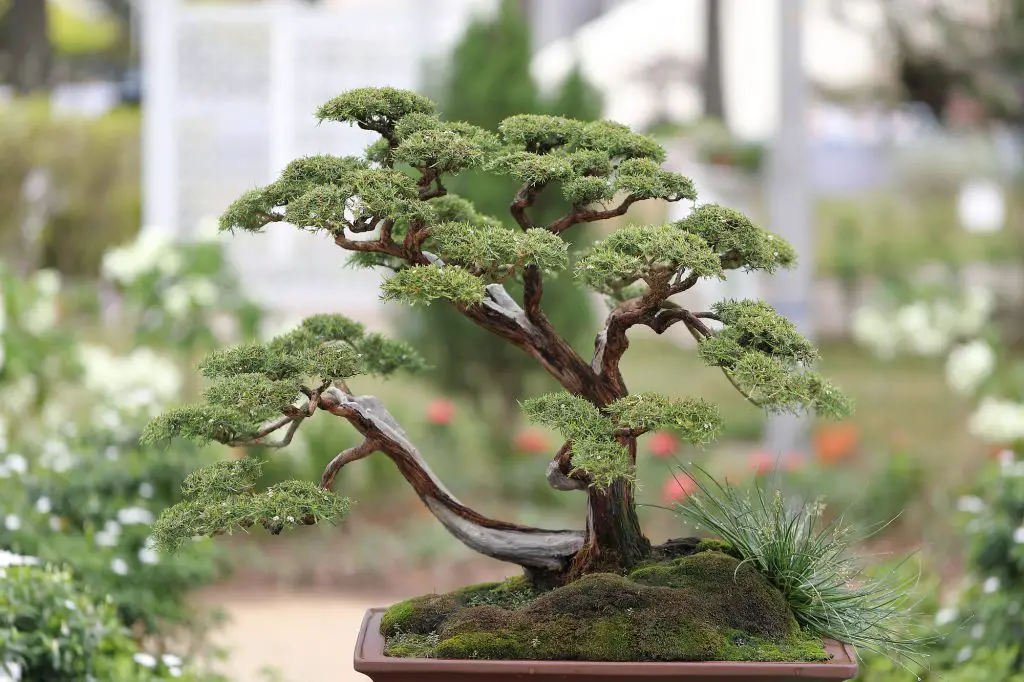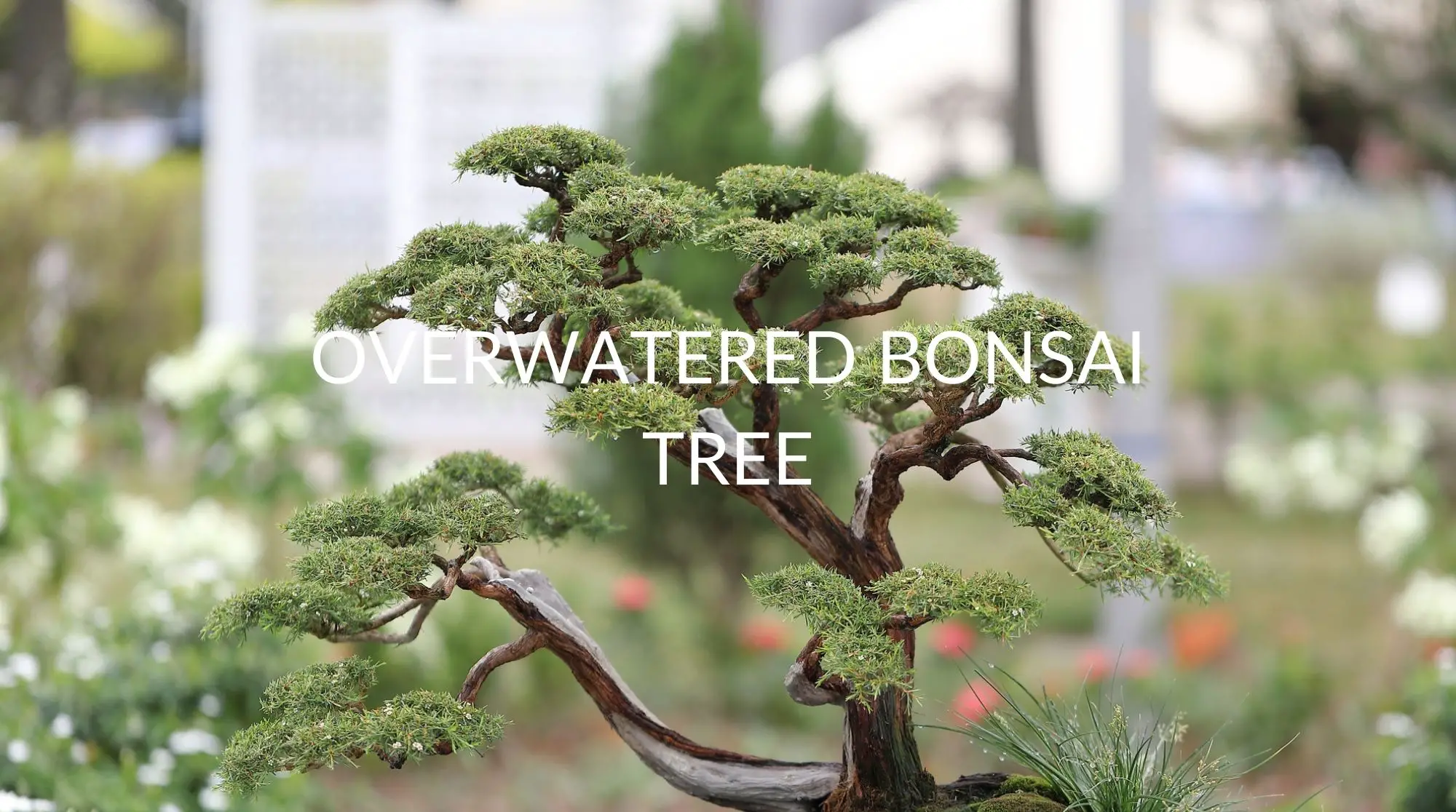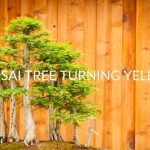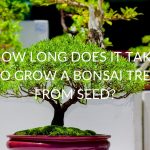One of the most common reasons for Bonsai tree death is overwatering. If your tree is yellowing or dropping leaves, you may be overwatering. Only water your Bonsai when the top centimeter of soil is dry to the touch.
Successfully growing a Bonsai tree takes a lot of time and skill, plus a lot of practice. In order to grow a healthy Bonsai tree, you will need to get in touch with your tree and know what it needs to thrive.
It may be tempting to water your tree frequently since it is growing in sandy soil and a very small pot, but don’t kill it with kindness! Depending on your species of tree and its growing conditions, it may only need to be watered every few days.
Read on for more information about how to water your Bonsai tree and how to avoid overwatering.
Can You Overwater A Bonsai Tree?
It is very easy to overwater a Bonsai tree because each tree needs a precise amount of water due to the fact that they are grown in very small pots.
The only way to determine how much to water your tree is by monitoring it very closely and knowing how much water your tree species needs to grow optimally.
You can find more information about your tree species and the conditions it requires here.
Keep in mind that your tree’s water needs may change over time. In warm months with very long days, the tree may require more water. If your tree is moved to a dry place in your house, such as near a heater or air conditioner, it may require more water as well.
For these reasons, it is imperative that you determine how much to water your tree and know the signs of overwatering.
Generally, overwatering problems develop over time, rather than overnight, so if you overwatered your tree once or twice, don’t worry. (That being said, if your tree is completely dry, it will need to be thoroughly watered right away.)

What Causes Overwatered Bonsai?
Not Allowing Soil to Dry Between Waterings
The only way to know how much to water your Bonsai is by monitoring the wetness of the soil. Watering on some type of schedule typically won’t work because the tree’s water needs may change depending on conditions.
The surface of Bonsai soil should be dry to the touch before watering. For those of you who love to water your plants (or who worry too much about underwatering), it may be difficult to let your tree sit if the top is dry.
Try to find a place where you can test the soil around a centimeter down. Soil should be wet a centimeter below the surface.
If the top of your soil is still damp when you check your tree, check it again at the end of the day or the next morning.
Inadequate Soil
Bonsai requires loose, sandy soil with plenty of drainages. (Don’t let this fool you into overwatering your Bonsai, however!)
Different species of trees will require different soils. For example, certain trees can tolerate damp soils while some other species cannot. For example, Pine trees like dry soils and will not tolerate overwatering.
That being said, many common species of Bonsai will do well in premixed Bonsai soil sold at most garden centers, so you can try this out first. This includes common species such as Juniper, Ficus, Chinese Elm, and Japanese Maple.
Azalea Bonsai should not be grown in soil that contains lime. Some experts recommend pure Kanuma soil for Azaleas.
If you purchased your Bonsai tree from a Bonsai nursery, make sure you find out what kind of soil they recommend for your type of tree.
If you purchased your tree from a big box store, or your Bonsai may have been mass-produced, know that the soil it comes in is not typically Bonsai soil. Many trees are packaged in denser soil to protect them during transit. You will need to repot your Bonsai using Bonsai soil.
Inadequate Drainage in Bonsai Pot
Even if you have the appropriate sandy soil, Bonsai will not survive if the pot allows water to pool in the bottom. Inadequate drainage will lead to root rot.
A Bonsai pot needs to have at least one drainage hole. A larger pot should have several holes placed around the bottom of the pot.
Do not place your Bonsai in a dish of water where it cannot drain. Other plants do not mind (or even like) sitting in dishes of water, but not Bonsai.
Bonsai Needs to be Repotted
If your Bonsai is very pot-bound, the roots will not be able to adequately absorb water (or nutrients, for that matter). When your tree isn’t absorbing water, the soil will retain too much, and the roots will be damaged.
Generally, young Bonsai need to be repotted around every other year. You can check to see whether your tree needs to be repotted by taking it out and examining the roots. If the roots are beginning to curl around the bottom of your pot, it is time for a new pot.
In addition, if the root ball seems to be more roots than dirt, it is probably time to repot.
The best time to repot your tree is in the spring.
Bonsai Roots are Damaged
If your Bonsai has been overwatered for a long time, it may have developed root rot. This is caused by the roots being unable to absorb all the water in the pot.
Root rot can be identified by black or brown roots that appear soft and may have an unpleasant odor. Healthy roots will be supple and dry.
When roots are damaged, they lose their ability to absorb water, leading to overwatering.
If your tree has root rot, you can gently trim off the affected roots. It is probably a good idea to re-plant the tree in fresh soil and avoid overwatering.
What Does An Overwatered Bonsai Tree Look Like?
So how do you know if you are overwatering? If your tree is growing nicely and its foliage looks healthy, you don’t need to worry about overwatering.
Yellow, Brown, or Black Foliage
However, if your foliage shows signs of stress, overwatering may be the culprit. If the leaves on your tree are turning yellow or brown, or if they have black spots or edges, this might be due to overwatering. This is true for all types of trees–including deciduous, evergreen, and broadleaf evergreen.
Bonsai Dropping Leaves
If your tree is dropping more leaves than usual, this is also a sign that you may be overwatering. All trees drop some leaves regularly, but if you think your tree is dropping more than usual, monitor your watering.
Keep in mind that deciduous Bonsai trees (such as Japanese Maple, Chinese Elm, or Crabapple) will drop their leaves in winter if they are grown outdoors.
Root Rot
If your roots start to look shriveled, black, damp, or shiny, or if they smell off or rotten, you may have root rot. You may also notice mold on your roots or in your pot.
It is very likely that overwatering is the cause of root rot. You will need to trim the roots and repot in fresh soil.
Branches are Getting Soft
If your Bonsai branches seem to be bendier than they were before, this may be due to overwatering. Branches may also appear shriveled.
This may be observed in the trunk as well.
The Trunk is Not Firmly in Soil
If you notice that the trunk of your tree is starting to dislodge from the soil or is wobbly, this may be an indicator that your soil is too wet. It probably also means that you have some root rot that is causing the roots to loosen and not anchor the tree.
You will need to check the roots and trim any damage.
How Do You Revive An Overwatered Bonsai Tree?
Remove Tree from Pot
You cannot leave your tree sitting in damp soil, or it will definitely develop root rot. If your pot is not draining, you will need to find a pot with more adequate drainage. You can leave your tree out for a short amount of time to let the roots air out and trim any damage.
Damaged roots will be soft and discolored.
Let Bonsai Roots Air Out
You can also spread out your Bonsai roots in order to let them dry. This will also help you identify any areas of dead roots so you can trim them. If your tree is very pot-bound, or if your roots are curling around the bottom of the pot, you will need to prune.
You can remove damp, old, or moldy soil from around Bonsai roots with a chopstick. This will help you dislodge soil from the roots gently.
Repot Tree in Fresh Soil
If you do notice root rot, you will need to repot it in fresh soil. Make sure the soil you are using is premixed Bonsai soil.
Make Sure Your Pot Has Drainage
Bonsai pots need to have at least one drainage hole in the bottom, or maybe more. If the roots of your tree are growing out of your drainage holes and blocking them, you will need to repot the tree into a bigger pot.
If your Bonsai still doesn’t drain well, you may need to add some rocks or other drainage mixture to the bottom of the pot.
Bonsai pots typically have feet on them, so they don’t sit on the ground–this also aids in drainage. Don’t leave your Bonsai sitting in water.
Use the Correct Soil
Bonsai soil will allow for greater drainage than regular potting soil. If your tree did not come planted in Bonsai soil, you would need to repot.
Ask at a garden center for Bonsai soil, or do some research on what types of soil your species of tree prefers.
Water When the Top Layer of Soil is Dry
Once you have let your tree dry out (but not until it is completely dry), you will need to figure out how often to water your tree. You may want to keep a daily journal of how frequently you water the tree, so you get a sense of what amount of water is adequate.
If you are misting your Bonsai a lot, discontinue the misting until you are sure the soil is adequately draining.
How To Avoid An Overwatered Bonsai?
Know Your Species
All aspects of Bonsai care require that you know what species of tree you have. This is true for watering, location, temperature, fertilizer, repotting, pests, and light.
For example, succulent species like Jade will not tolerate overwatering and will need to rest after repotting before watering.
The Fukien Tea (Carmona) will need soil that both drains well and retains some moisture. If you have a Fukien Tea Bonsai, you may want to visit a Bonsai center to obtain soil with the correct balance.
Don’t Let Your Tree Sit in Water
If you have anxiety about underwatering your Bonsai, that might lead to overwatering. You may want to leave your tree in water to make sure it is receiving enough, but for Bonsai, this is not advisable.
Bonsai soil needs to dry before watering. How quickly the soil dries depends on the type of tree, the size of the pot, the climate, and the soil. Trees often need less water during short winter days than long summer days.
Unfortunately, you will not be able to just put your Bonsai in a dish of water and forget about it. You will need to monitor its water needs every day so you know when it needs watering. Depending on conditions, it may need water every few days or as often as more than once per day.
Use Bonsai Soil
Bonsai soil is imperative so that your tree can adequately drain. If you have cut a larger tree to make it into a Bonsai, you will need to use Bonsai soil even if the tree was originally growing in regular potting soil or in the ground.
Many garden centers sell premixed Bonsai soil or buy it online. Make sure you have the correct soil needs for your species of tree, however.
Water When the Top Centimeter is Dry
It may be difficult to determine when the soil underneath is dry if your tree is in a very small pot, but it is crucial that you let the top layer of soil drain before you water your tree.
If you get really familiar with your tree, you may be able to tell by its weight when it needs to be watered. The biggest thing about growing Bonsai is paying attention to your tree and what it needs (but not giving it more than it needs!). You may need to keep a journal of your tree’s conditions, needs, and growth.
Water Your Tree Evenly
Soak the entire top of the soil each time you water. If your tree is very dry, you may want to submerge the pot in water until bubbles stop rising to the top. If you water unevenly, this will lead to uneven drainage and growth.
How Do I Water My Bonsai?
When your tree is dry, completely saturate the soil and then let the excess drain off. Water should be flowing out of the drainage holes in the bottom of the pot. This will ensure that you are saturating the entire root system of the tree.
Saturating the roots like this is the only way you will need to water your tree. Bonsais aren’t like other houseplants that tolerate a little watering here and there. Each time you water a Bonsai, you will be soaking the soil and letting it dry.
You may want to use a watering can with a small nozzle so that you don’t dislodge too much soil when watering.
You can also submerge the pot in water until you don’t see any bubbles. This can be done in your kitchen sink if your tree fits. You may have to do this more than once. It is imperative that you let the pot drain completely after watering.
Typically, Bonsai do well with regular tap water or rainwater.
Conclusion
If you suspect you are overwatering your Bonsai tree, don’t despair. What’s important is that you have identified the issue so you can resolve it. Make sure you let your tree dry out a little bit and trim off any damage. Then develop a new watering routine.
Bonsai takes a lot of practice to get right. Know that overwatering problems don’t happen overnight but develop over several weeks or months. If you watch your tree and note any warning signs, you may be able to correct for overwatering.
If your tree did have root rot or many of its leaves were damaged from overwatering, it will take time for the tree to revive itself. Just be patient (and don’t overwater!).








